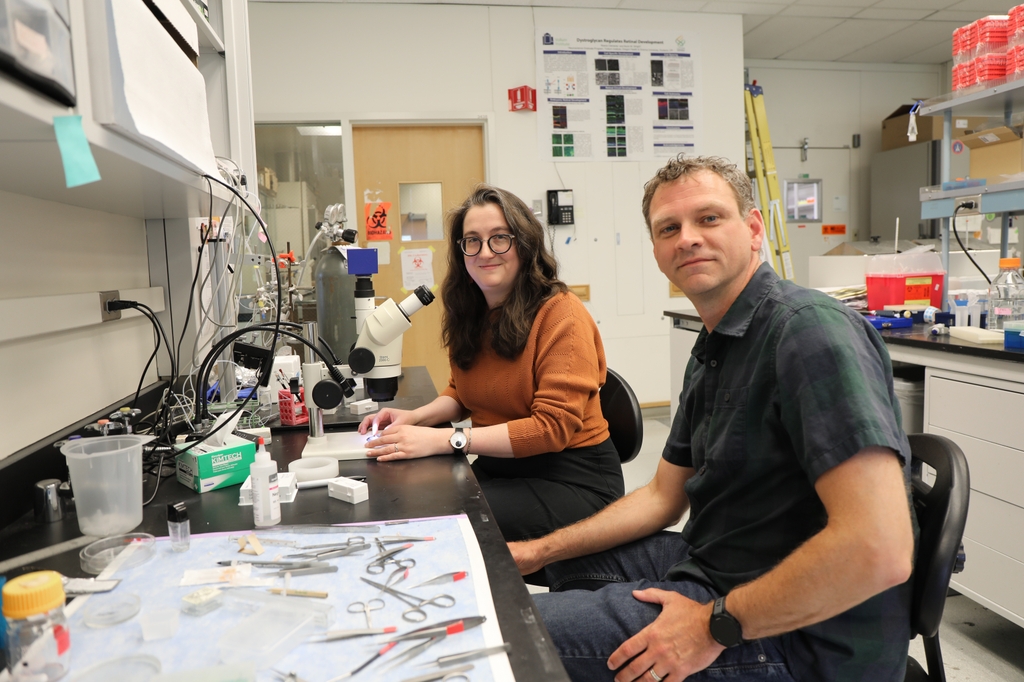
Scientists have uncovered how a protein helps build and maintain vital brain connections, providing insights into the neurological problems experienced by people with a rare form of muscular dystrophy known as dystroglycanopathy.
The research conducted at Oregon Health & Science University and published in Communications Biology reveals that the protein Dystroglycan plays a critical role in forming and maintaining connections between nerve cells in the cerebellum — the part of the brain responsible for movement coordination and motor learning.
In people with dystroglycanopathy, genetic mutations in the protein affect not only muscles but also the brain. The condition is a type of congenital muscular dystrophy, a group of inherited disorders that appear at birth or in early infancy.

"Most research on Dystroglycan is focused on the muscular system," said Jennifer Jahncke, Ph.D., lead author on the study and a postdoctoral scholar in the lab of Kevin Wright, Ph.D., associate professor at OHSU's Vollum Institute.
"There is a neurological aspect that has been overlooked. What this study shows is that Dystroglycan is also essential for building the brain's communication network — particularly connections that help balance and regulate nerve signals."
Using genetically engineered mice, the team deleted the gene that makes Dystroglycan — specifically in Purkinje cells, the main type of neuron that controls motor movements. They did this before synapses -- connections between nerve cells -- had a chance to form.
Without Dystroglycan, the synapses between Purkinje cells and nearby inhibitory neurons were fewer in number and did not work properly. Electrical signals that normally pass between these cells were weaker and less frequent.

"This neurological aspect contributes to why children with dystroglycanopathy often have movement problems, delayed motor development and brain abnormalities seen on MRI scans," said Wright, the study's senior author.
The research team found that different parts of the Dystroglycan protein are responsible for synapse development. The outer part of the protein is necessary to build synapses while the inner part, which connects to the cell's internal machinery, maintains those connections and keeps them functioning over time.
If Dystroglycan is broken or missing — as it is in dystroglycanopathy — nerve cells in the brain may struggle to form proper networks. This could disrupt how the brain processes and controls movement and other functions.
Dystroglycanopathy is rare, but its symptoms can be severe, ranging from muscle weakness and learning difficulties to epilepsy and brain malformations. There are currently no effective treatments for the disease.
"Now that we know what the neurological phenotypes are with these mutations, we can try to resolve them," Wright said. "Our next line of research is looking at using a gene therapy-based approach to address the neurological aspects of the disease in mouse models. What we're really focusing on now is trying to fix the synaptic defects, which happen after birth, that could lead to better diagnostic tools and treatments — including therapies that could protect or restore synapse brain function."
In addition to Wright and Jahncke, Eric Schnell, M.D., Ph.D., associate professor of anesthesiology and perioperative medicine in the OHSU School of Medicine, contributed to the study.
This research was supported by the National Institute of Neurological Disorders and Stroke, of the National Institutes of Health, under award numbers R01NS091027, R01NS126247, F31NS120649, P30NS061800; by the U.S. Department of Veterans Affairs under award number I01BX004938-01, and a grant from Cure CMD. This work was also supported by the U.S. Army Medical Research and Materiel Command through the Epilepsy Research Program under Award No. W81XWH-18-1-0598. Opinions, interpretations, conclusions and recommendations are those of the author and are not necessarily endorsed by the Department of Defense. In conducting research using animals, the investigator adheres to the laws of the United States and regulations of the Department of Agriculture. The content is solely the responsibility of the authors and does not necessarily represent the official views of the NIH, U.S. Department of Veterans Affairs, the U.S. Department of Defense or any other funders.
All research involving animal subjects at OHSU must be reviewed and approved by the university's Institutional Animal Care and Use Committee, or IACUC. The IACUC's priority is to ensure the health and safety of animal research subjects. The IACUC also reviews procedures to ensure the health and safety of the people who work with the animals. The IACUC conducts a rigorous review of all animal research proposals to ensure they demonstrate scientific value and justify the use of live animals.






